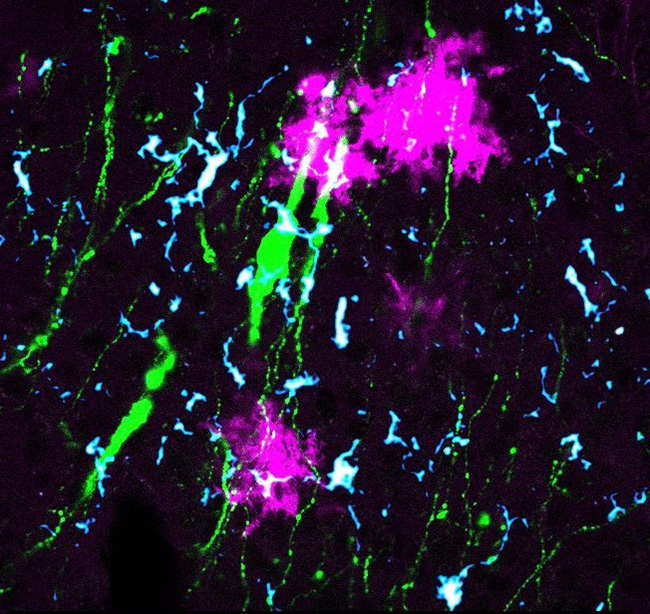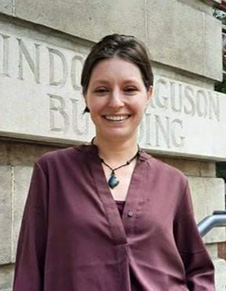
GnRH neurons (green), the conductor of fertility in the brain, surrounded by two types of glial cells: astrocytes (magenta) and microglia (cyan). We can observe the 3 cell types in close association, suggesting communication between each other.
Polycystic ovary syndrome (PCOS) affects 5 to 10 per cent of women worldwide and causes infertility, obesity and diabetes, as well as higher risks of cardiovascular issues and cancer of the reproductive organs. Many studies have focused on neurons as a possible culprit for the disease, but Dr Elodie Desroziers is looking to glia. The New Zealand Health Research Council has awarded Elodie the prestigious Sir Charles Hercus Fellowship to start her independent research to unravel the role of glia in regulating fertility.

Dr Elodie Desroziers.
Glia are often thought of as the innocuous scaffolding for the 'more important' neurons in the brain. More recently, it is becoming more apparent that glial cells have an active and essential role to play in brain function. In fact, there are 10 times more glia than neurons in the brain!
Elodie's new line of research will measure how glial cells' number and shape change over the development of polycystic ovary syndrome in a preclinical mouse model of the disease. By seeing what changes occur, she may find clues into where things are going wrong.
She will then use innovative tools to look at the normal activity of glial in vivo and turn glial cells on or off to see if they cause PCOS-like symptoms.
Elodie's work could bring us a much better understanding of this disease; "it's a big dream for my Hercus-funded work; if we can find the right target and try to move towards a treatment one day".
